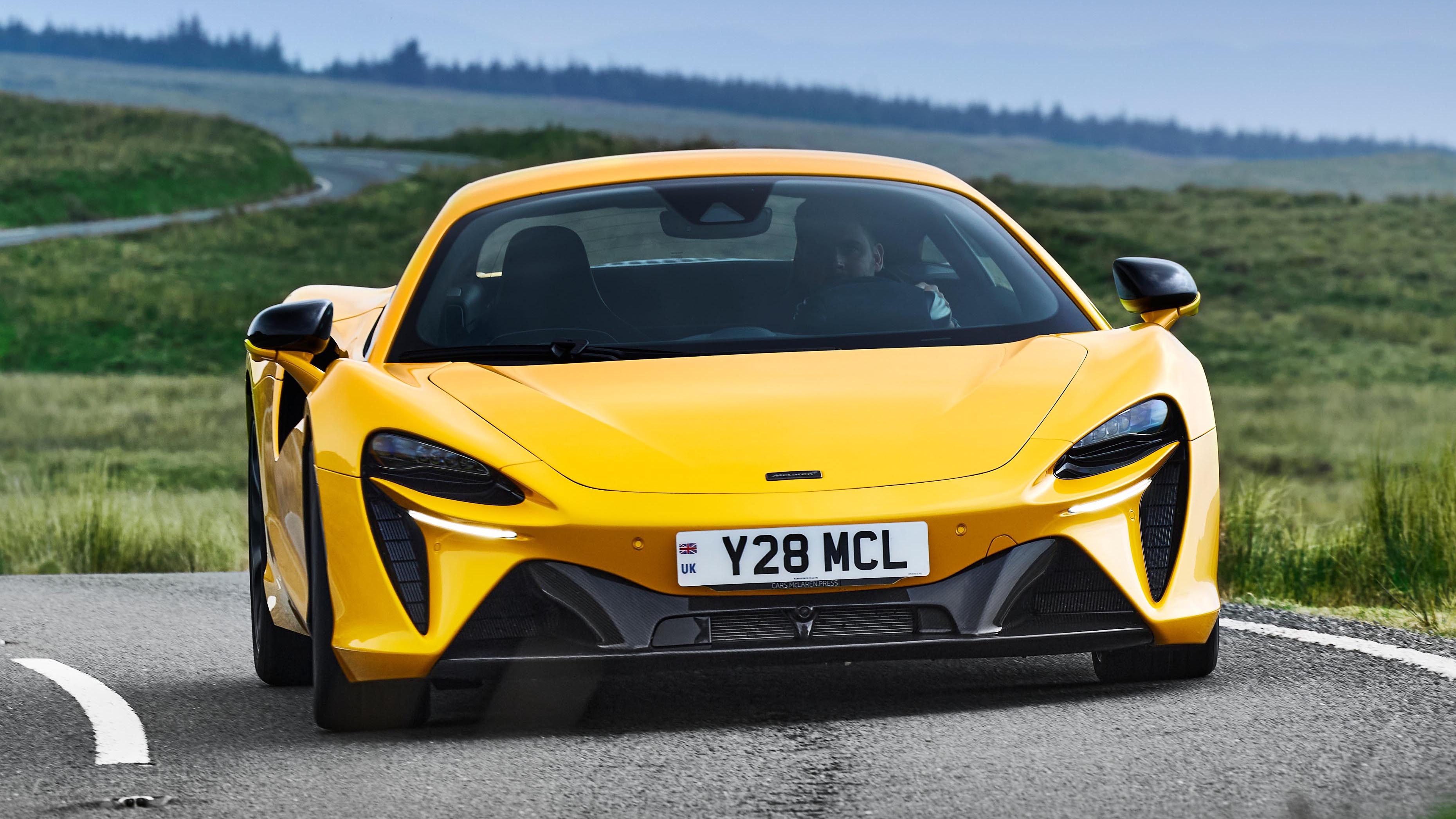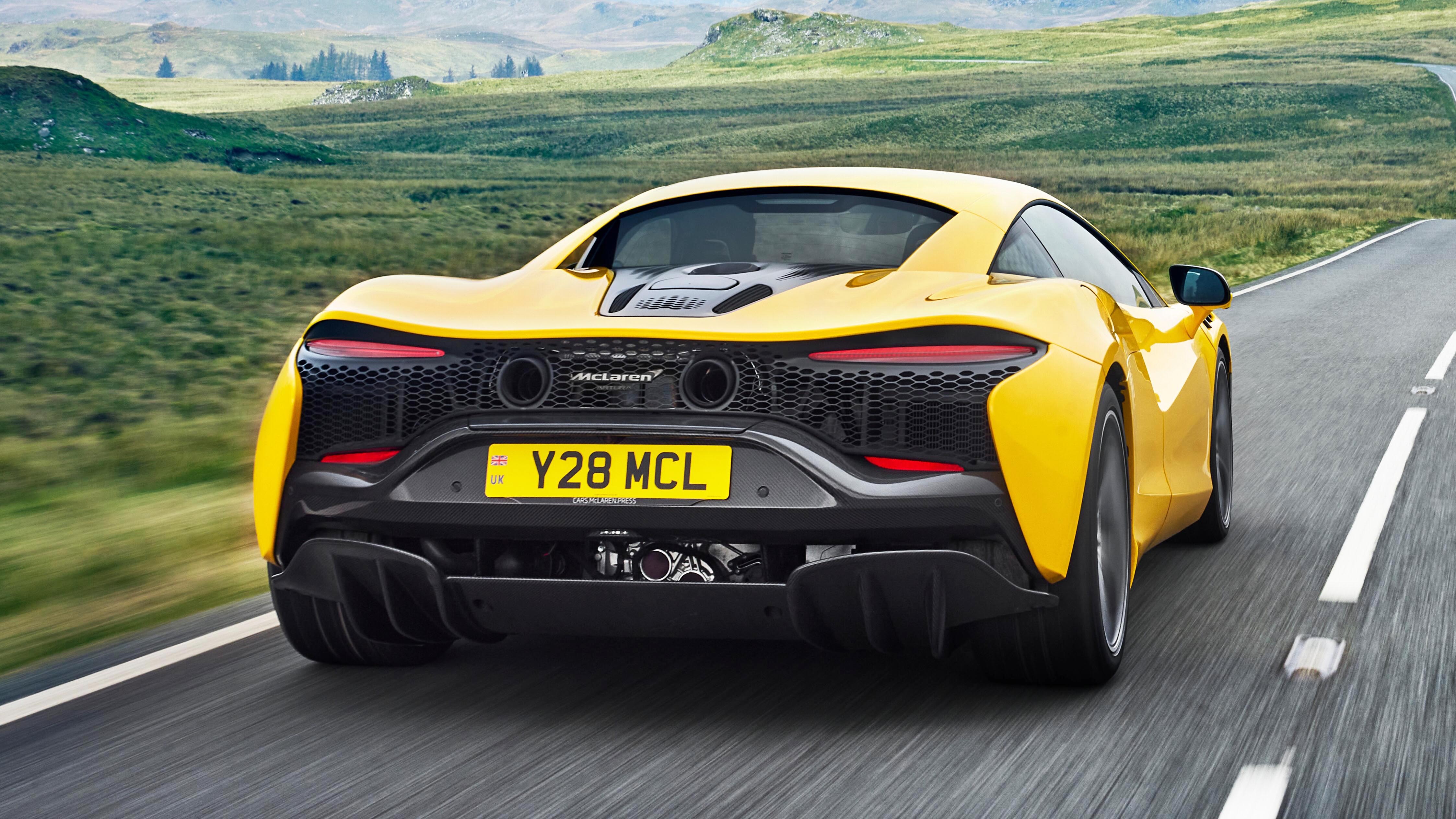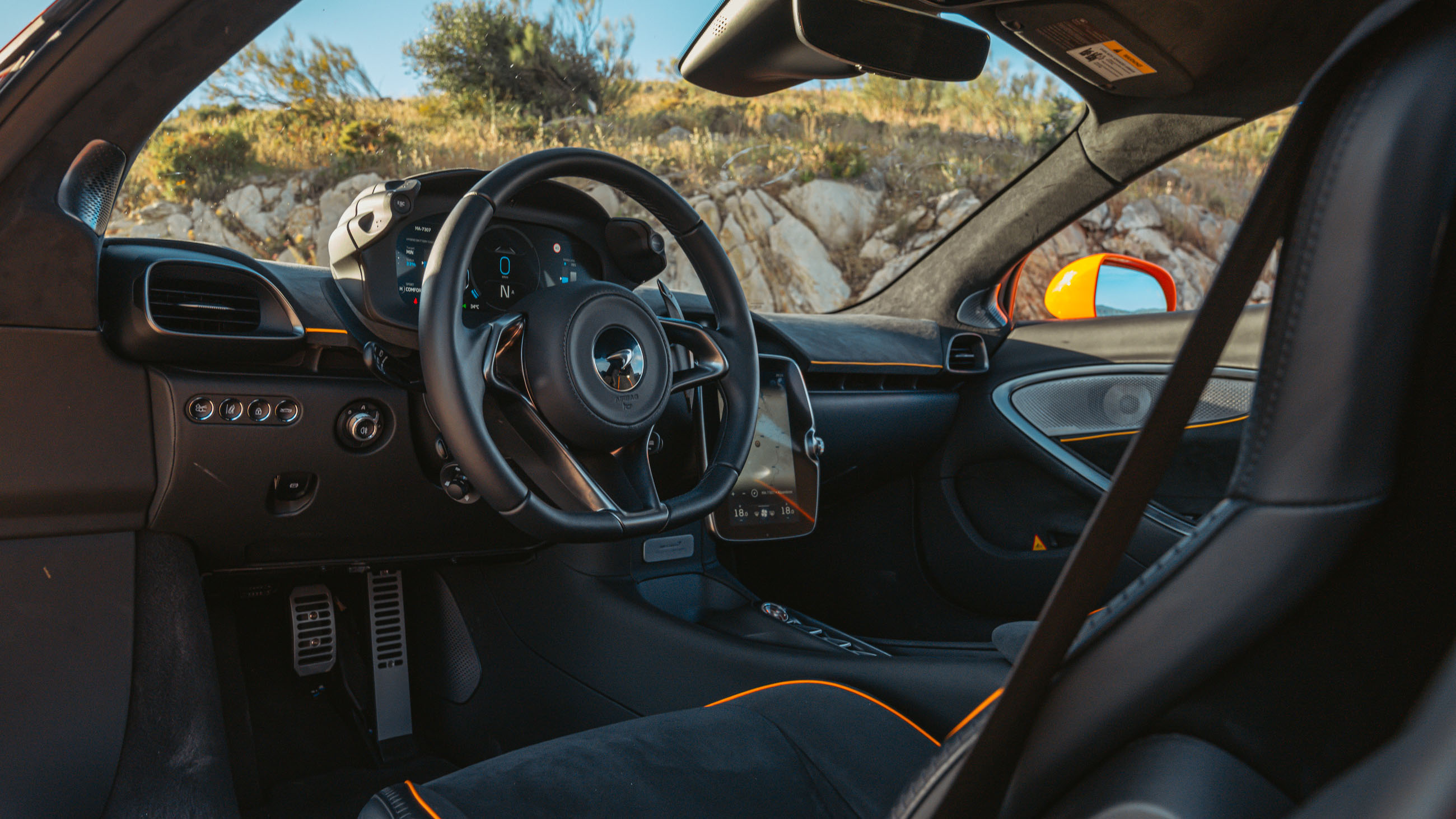
Driving
What is it like to drive?
Let’s begin on track: can it cut the mustard on a circuit? Yes, it really can. In fact, as is so often the case with modern supercars, you actually need a track to properly get the measure of it. On road there’s feedback and tactility, but you’re aware the car isn’t having to work that hard. Put it this way: on road we found it hugely capable, but missing the last bit of magic. On track we found it.
McLarens tend to have delicate, accurate, communicative front ends (sensitive sniffers if you like), and the Artura is no different. It loves carrying speed into corners, can take a huge amount of pressure and generate enormous grip through the loaded-up front tyre. It’s very resistant to understeer. Pile in on the brakes and it’ll be the rear that starts to edge wide, doing so very progressively.
In fact it does everything progressively. Get back on the power and you don’t need to second guess the turbo lag – the blend of electric and petrol is very predictable. And thanks to the new electronic differential (the first mechanical LSD in a McLaren) smoky slides are there for the taking. There’s not been a McLaren that’s easier to exploit and play with than this.
How are the brakes? You said earlier there were issues with them.
Few complaints on track: they’re very strong with reassuring pedal feel, just got a bit grumbly under repeated extreme use (hardly surprising with ambient temperatures of 37 degrees at Ascari). With the launch cars, we found a bigger issue on the road: not enough initial bite in the pedal. You brake but seem to surf onwards, not slowing as much as you expected. This is part of McLaren’s play for purity – they’re great when you’re using them hard, but less good during the 90 per cent of the time you’ll be pottering about. Once we spent some time with later cars in the UK, this issue seemed far less noticeable, likely a combo of calibration tweaks in Woking and getting familiar with the car.
But, boy, is the body control impressive. You can brake, turn, accelerate, do whatever you please and the car has got you covered. Traction is immense, and even at the limit you don’t feel the Artura is going to bite you, or that the chassis isn’t going to be able to cope with the power. Sure, it makes this less wild and free-spirited than the Ferrari 296 GTB, but there’s so much tactility through steering and chassis that it’s a genuinely exciting car to drive.
Oh, and the gearbox is terrific. You’ll be switching into manual mode often, just to enjoy the tactile click of the rocker paddles and how beautifully judged the downshift blips are.
Key question: does it sound good?
It’s not as intense and expressive as Ferrari’s V6, but it has a tuneful mid-range, the kind you’ll actually enjoy listening to. Better than the outgoing V8, that’s for sure, plus it pulls cleanly all the way to the 8,500rpm limiter. Before the 2024 upgrades the charge to the redline was perhaps a little anticlimactic, but McLaren’s remap has done the trick: the engine now seems to surge for that last few rpm and want you to hold on for the final flourish. You don’t notice the extra power, but this was always a very fast car to begin with. It certainly doesn’t feel ‘entry-level’ flat chat through third and fourth.
Should I upgrade my pipes?
We’ve only tested a 2024 car with the optional sports exhaust, which is considerably louder than we remember the old car being. For some this might be a touch too droney if you’re planning to use the car on a long motorway commute. But are many people going to waste their Artura mileages on the motorway?
The sports pipes add a new resonator, and there are fewer baffles in the exhaust itself. A symposer channels engine noise into the cabin (so it’s never enhanced by the speakers) and the effect has added more timbre and emotion to the Artura’s soundtrack. It sounds just that bit more exotic now, best sampled in Track mode.
We’re not convinced the new engine mounts have made a vast difference to the Artura’s manners: it’s a very smooth-revving powertrain and though the company says they’ve had the effect of reducing a slight hesitancy on turn-in, you’d really need the original car and latest model back-to-back to compare. What’s interesting is how wholesale the changes under the skin are. If you bought an early Artura you can take it to a dealer and they’ll add the 20bhp bump for free. But you can’t retrofit the new exhausts or engine mounts because their fixings are all so different.
Nail it at low revs, and after the initial electric hit there is a tiny (and we mean microscopic) lull while the turbos are still getting going, but at high revs you never notice it. Drivability is much improved: you don’t need to keep the motor spinning hard. We’d have liked a bigger e-hit to make its impact felt, but this is carefully blended and effective.
Featured

Trending this week
- Car Review
Bentley Speed Six






